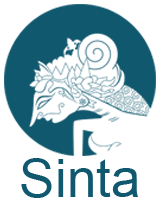Mutu teh celup dengan campuran bubuk sereh (Cymbopogon citratus) dan bubuk kelor (Moringa oleifera)
Abstract
Moringa is one of potential raw material of herbal tea. Moringa tea had disadvantage is a off-flavour aroma. The addition of lemongrass hopefully can reduce the off-flavour aroma and improve the quality of tea. This research aimed to determine the effect of mixing lemongrass powder and moringa powder on the quality of teabags. The method that used in this study was complete randomized design (CRD) that was treatment P1 = 100% moringa leaf powder: 0% lemongrass powder; P2 = 80% moringa leaf powder: 20% lemongrass powder; P3 = 60% moringa leaf powder: 40% lemongrass powder; P4 = 40% moringa leaf powder : 60% lemongrass powder and P5 = 20% moringa leaf powder : 80% lemongrass powder. The data were analyzed using analysis of variance at a level of 5% and if there were real differences, tests continued using the LSD (least significant difference) at the same level. Based on the results of the analysis, it is known that the treatment has a significant effect on chemical quality (antioxidant activity, moisture content, and pH) and organoleptics (color and aroma), while it has no significant effect on the organoleptic taste in teabags. The best treatment for the chemical quality of teabags is produced by P2 treatment (80% moringa powder: 20% lemongrass powder) with antioxidant activity of 88.64%; moisture content of 6.44% and pH of 6.0. The best treatment for the organoleptic quality of hedonic tea bag color is produced by P2 treatment (80% Moringa powder: 20% lemongrass powder) with a value of 3.55 (like criteria) and for hedonic teabag aroma produced by P5 treatment (20% moringa leaf powder: 80 % lemongrass powder) with a value of 3.45 (rather like criteria).
Keywords
Full Text:
PDFReferences
Akila, B., Vijayalakshmi, R., Hemalatha, G., dan Arunkumar, R. (2018). Development and evaluation of functional property of guava leaf based herbal tea. Journal of Pharmacognosy and Phytochemistry, 7(3), 3036–3039. https://www.phytojournal.com/archives/2018/vol7issue3/PartAO/7-3-440-782.pdf
Aminah, S., Tezar, R., dan Muflihani, Y. (2015). Kandungan nutrisi dan sifat fungsional tanaman kelor (Moringa oleifera). Balai Pengkajian Teknologi Pertanian, 5(2), 35–44.
Arumsari, K., Aminah, S., dan Nurrahman. (2019). Aktivitas antioksidan dan sifat sensoris teh celup campuran bunga kecombrang, daun mint dan daun stevia. Jurnal Pangan dan Gizi, 9(2), 128–140. http://103.97.100.145/index.php/JPDG/article/view/5249/pdf
Batubara, S. C., dan Pratiwi, N. A. (2018). Pengembangan minuman berbasis teh dan rempah sebagai minuman fungsional. Jurnal Industri Kreatif dan Kewirausahaan, 1(2), 109–123. https://doi.org/https://doi.org/10.36441/kewirausahaan.v1i2.129
Chamidah, A., Tjahyono, A., dan Rosidi, D. (2000). Penggunaan metode pengasapan cair dalam pengembangan ikan bandeng asap tradisional. Jurnal Ilmu-ilmu Teknik, 12(1), 88–90.
Charlinia, W. (2016). Pengaruh penambahan buah mengkudu (Morinda citrifolia L.) terhadap aktivitas antioksidan dan kadar kafein biji kopi robusta (Coffea canephora) [Universitas Bengkulu]. http://repository.unib.ac.id/17240/1/skripsi perpustakaan UNIB.pdf
Dwiani, A., dan Rahman, S. (2017). Analisis Kimia Pada MP-ASI Biskuit Bayi Dari Campuran Tepung Pisang Kepok, Tepung Kacang Tunggak Dan Tepung Daun Kelor. Laporan Penelitian Dosen Pemula. Universitas NAhdlatul Wathan. Mataram.
Febrilani, R. (2014). Kajian berat daun salak kering dan suhu awal air penyeduh terhadap aktivitas antioksidan air seduhan teh herbal daun salak bongkok (Salacca edulis Reinw) [Universitas Pasundan Bandung]. http://repository.unpas.ac.id/1888/
Hanna, A., Sallam, Y., El-Leithy, A., dan Aly, S. (2012). Lemongrass (Cymbopogon citratus) essential oil as affected by drying methods. Annals of Agricultural Science, 57(2), 113–116.
Hendro, M. N. (2019). Pembuatan teh herbal dari daun kelapa sawit (Elaeis guineensis Jacq) [Universitas Sumatera Utara. Medan]. https://repositori.usu.ac.id/bitstream/handle/123456789/25218/151501118.pdf
Herbie, T. (2015). Kitab tanaman berkhasiat obat 226 tumbuhan untuk penyembuhan penyakit dan kebugaran tubuh. Octopus Garden Publishing.
Hioki, A., Asakai, T., Maksimov, I., Suzuki, T., Miura, T., Obromsook, K., dan Tangpaisarnkul, N. (2014). Report of the pilot study APMP.QM-P25 APMP comparison on pH measurement of borate buffer. National Metrology Institute of Japan and National institute of Metrology Thailand
Husein, M. A. (2013). Analisis kandungan kalsium dan tingkat penerimaan teh daun kelor (Moringa oleifera Lam). Sekolah Tinggi Ilmu Kesehatan (Stikes): PKU Muhammadiyah Surakarta.
Ihromi, S., Asmawati, Dewi, E. S., dan Muliatiningsih. (2019). Teh bubuk herbal daun ashitaba dan kulit buah naga. Jurnal AGROTEK, 6(2), 73–79. http://journal.ummat.ac.id/index.php/agrotek/article/view/1220/942
Ilona, A. ., dan Ismawati, R. (2015). Pengaruh penambahan ekstrak daun kelor dan waktu inkubasi terhadap sifat organoleptik yoghurt. E-Jurnal Boga. 4(3), 151–159.
Indrawati, D., dan Nanik, S. (2015). Aktivitas antioksidan dan total fenol seduhan teh herbal daun pacar air (Impatiens Balsamina L.) dengan variasi metode pengeringan dan konsentrasi [Universitas Muhammadiyah Surakarta]. http://eprints.ums.ac.id/33513/
Kencana, E. (2015). Pengaruh suhu dan lama pengeringan terhadap karakteristik teh herbal daun katuk (Saouropus adrogynus L. Merr). Universitas Pasundan. Bandung.
Khan, N., dan Mukhtar, H. (2013). Tea and health: studies in humans. Current Pharmaceutical Design, 19(34), 6141–6147.
Krisnadi, A. (2012). Kelor super nutrisi. Pusat Informasi Dan Pengembangan Tanaman Kelor Indonesia Lembaga Swadaya Masyarakat – Media Peduli Lingkungan (LSM-MEPELING). https://kelorina.com/ebook.pdf
Muzaki, D., dan Wahyuni, R. (2015). Pengaruh penambahan gingger kering (Zingiber officinale) terhadap mutu dan daya terima teh herbal daun afrika selatan. Jurnal Teknologi Pangan, 6(2), 67–75. https://core.ac.uk/download/pdf/286719987.pdf
Nurhayati, Yuwanti, S., dan Urbahillah, A. (2020). Karakteristik fisikomia dan sensori kombucha cascara (kulit kopi ranum). Jurnal Teknologi dan Industri Pangan, 3(1), 38–49. https://doi.org/10.6066/jtip.2020.31.1.38
Ragasa, C., Buluran, A., Mandia, E., dan Scen, C. (2014). Chemical constituents of Cayratia trifolia. Der Pharma Chemica, 6(6), 418–422.
Rahmawati, I. (2015). Penentuan lama pengeringan pada serbuk biji alpukat. Universitas Brawijaya. Malang.
Sae-tan, S., Grove, K., dan Lambert, J. (2011). Weight control and prevention of metabolic syndrome by green tea. Pharmacological Research, 64(2), 146–154.
Sayuti, K., dan Yenrina, R. (2015). Antioksidan alami dan sintetik. Andalas University Press.
Shahzadi, P., Muhammad, A., Mehmood, F., dan Chaudhry, M. Y. (2014). Synthesis of 3, 7-dimethyl2, 6-octadienal acetals from citral extracted from lemon grass, Cymbopogon citrates L. Journal of Antiviruals and Antiretrovirals, 6(1), 28–31. https://doi.org/10.4172/jaa.1000091
Sinaga, I. M. (2010). Analisis sikap, persepsi konsumen dan rentang harga pada beras organik SAE (Sehat Aman Enak) pada Gapoktan Silih Asih Desa Ciburuy Kabupaten Bogor Jawa Barat [Institut Pertanian Bogor. Bogor]. https://adoc.pub/queue/analisis-sikap-persepsi-konsumen-dan-rentang-harga-pada-bera.html
Stone, H., dan Sidel, J. L. (2004). Sensory evaluation pratices. Elsevier Academic Press. https://doi.org/https://doi.org/10.1016/B978-0-12-672690-9.X5000-8
Villalobos, M. (2015). Antioxidant activity and citral content of different tea preparations of the above-ground parts of lemongrass (Cymbopogon citratus Stapf.). Journal of Agricultural and Food Chemistry, 46(3), 1111–1115.
Winarno, F. (2002). Kimia pangan dan gizi. Gramedia Utama.
DOI: https://doi.org/10.31764/jafp.v2i1.8949
Refbacks
- There are currently no refbacks.
Copyright (c) 2022 The Authors

This work is licensed under a Creative Commons Attribution-ShareAlike 4.0 International License.
JAFP is indexing in the following databases:











